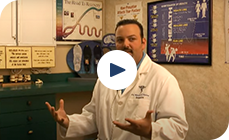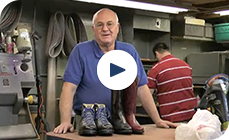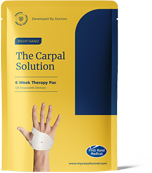

If you start feeling tingling, pain, or numbness in your fingers, it may be stemming from a pinched nerve somewhere on your arm or neck. A pinched nerve in fingers, wrists, elbow, or neck can be caused by any number of issues; particularly with a pinched nerve and numbness in fingers, you could be experiencing symptoms of carpal tunnel syndrome. You might be wondering how to fix a pinched nerve in fingers or wrists, because the symptoms can be deeply uncomfortable or even painful. The good news is that these issues are often easily treatable — but the first step towards treatment must be understanding where symptoms originate.
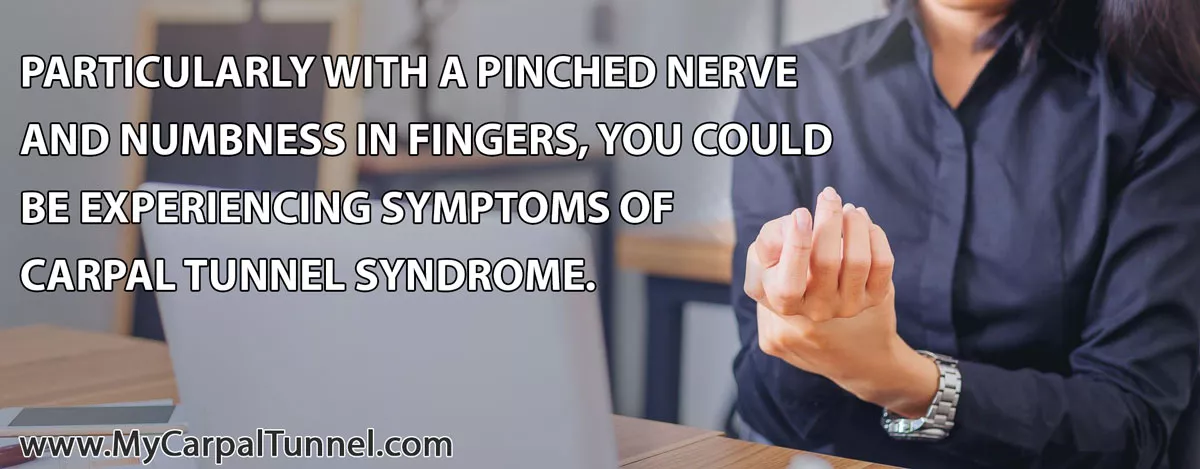
WHY A PINCHED NERVE CAUSES TINGLING OR NUMBNESS
Can pinched nerve cause numbness in fingers? The short answer is yes. You could also experience tingling or pain in your fingers. Nerves provide sensation in our body; if a nerve becomes compressed, or pinched, that process is interrupted. We might lose sensation altogether (numbness), partially (tingling), or experience unpleasant sensations (pain). The larger term for these kind of issues is peripheral neuropathy, and more than 20 million people in the United States experience this in some form. PN can be caused by injury, disease, hormonal imbalance, nutrition imbalance, or infection. In many instances, the cause remains unknown; according to a study by the Foundation for PN, 52% of people who experience peripheral neuropathy don’t ever learn the cause of their symptoms. It can be incredibly frustrating not to understand the source of your pain or discomfort, so whenever possible it’s important to take a deeper look at what might be happening if you’re experiencing a feeling of pinched nerve and numbness in fingers or wrists.
WHAT CAN CAUSE PINCHED NERVES: IN FINGERS, WRISTS, NECK
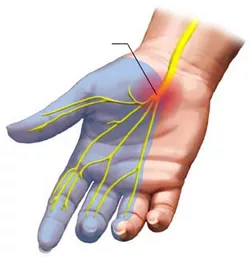 When left untreated, peripheral neuropathy of any kind can lead to permanent damage, or even dangerous surgery. That’s why even a small sensation, a feeling of a pinched nerve in fingers or other extremities, is nothing to take lightly. There are three nerve areas in particular that, when compressed, can cause tingling or numbness in your fingers and palms.
When left untreated, peripheral neuropathy of any kind can lead to permanent damage, or even dangerous surgery. That’s why even a small sensation, a feeling of a pinched nerve in fingers or other extremities, is nothing to take lightly. There are three nerve areas in particular that, when compressed, can cause tingling or numbness in your fingers and palms.
The median nerve is a nerve located in your wrist, and provides function and sensation in the thumb, index, or long fingers. When compressed for too long, or injured, you may develop Carpal Tunnel Syndrome. If you feel like you may have a pinched nerve in fingers one, two, or three (thumb, forefinger, long fingers), the real ‘pinched’ nerve may be in your wrist, and you may need to treat yourself for Carpal Tunnel Syndrome.
The ulnar nerve, on the other hand, is located in your elbow. It provides function and sensation in your ring and little finger, so if you feel tingling or numbness in that area, your ulnar nerve may be compressed or injured. This is more commonly known as Cubital Tunnel Syndrome. Between the two, Carpal Tunnel is significantly more common.
It’s also possible, though less likely, that a pinched nerve in your neck might be causing the tingling in your fingers.
PINCHED NERVE IN NECK CAUSING TINGLING IN FINGERS
In some instances, a pinched nerve in the neck could cause pain, tingling, or weakness all down your arm and into your hand. This is known as Cervical Radiculopathy. As the vertebra in your neck age, the disks lose water and height — which means the vertebra move closer together. Bone spurs are your body’s response to this problem — they form to protect the disks — but they can also cause compression on nerves. This leads to the Cervical Radiculopathy. Not all people experience pain with the compressed nerves, and it is unknown why others do.
If you have pain in more areas than just the fingers specific to Carpal or Cubital Tunnel Syndrome, up and down your arm, or if your pain is affected by how you move your neck, you may be experiencing Cervical Radiculopathy — but it’s important to get a diagnosis from a medical professional to be sure.
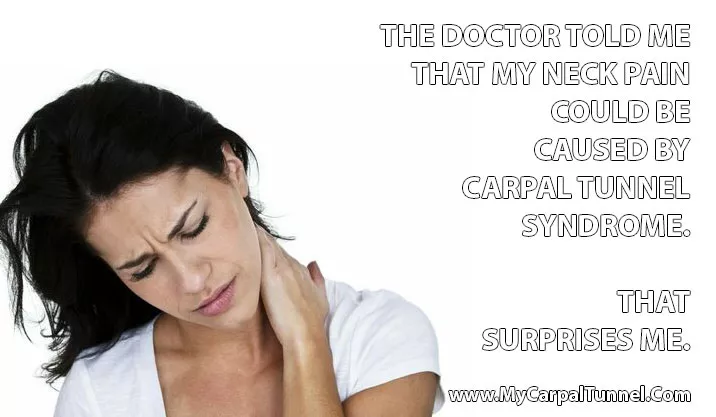
FINDING RELIEF FOR PAIN FROM A PINCHED NERVE IN FINGER
Diagnosis is key to treating a pinched nerve, because the treatment will be different depending on the source of your discomfort. For cervical radiculopathy, there is a soft collar that can be worn to provide rest for neck muscles and relief for pressure on the nerve. Physical therapy and certain medications can also help, but most people who experience cervical radiculopathy recover on their own, without treatment. Cubital Tunnel Syndrome can likewise often be treated by changing your lifestyle to avoid pressure on the ulnar nerve, using certain medications, or even surgery — although the latter comes with significant risks.
FINDING RELIEF FOR CARPAL TUNNEL PAIN
The key to Carpal Tunnel Syndrome treatment likewise is releasing pressure from that median nerve. If you believe you have CTS or have been diagnosed, start treatments as soon as possible — the sooner you deal with the problem, the less likely you’ll need surgical treatment. First, make sure there are no underlying issues, such as arthritis or diabetes, that could be causing your CTS. Then adjust whatever habit or lifestyle that might be causing the compression. Give the wrist plenty of rest, and stop whenever you feel symptoms flare up. Exercises like yoga have been shown to ease the symptoms of carpal tunnel, and cold packs or anti-inflammatory medicines can help with the swelling. If none of these treatments work, surgery is often recommended by doctors to prevent permanent damage. However, there are numerous risks associated with Carpal Tunnel surgery.
One of the simplest, most affordable ways to treat Carpal Tunnel Syndrome — with the lowest risk — is The Carpal Solution. This unique new therapy was developed by doctors who specializes specifically in CTS treatment, and has been shown to provide complete remission from CTS within six weeks.
It’s pain-free and incredibly easy to implement: simply wear the specially designed brace during sleep and enjoy relief from symptoms within a month and a half. During this time, the Carpal Solution gently reshapes the soft tissue in and around your carpal tunnel by tugging on three key points on the palm. This gentle but consistent stretching motion releases pressure from the median nerve without interrupting your life, daily activities, or job.
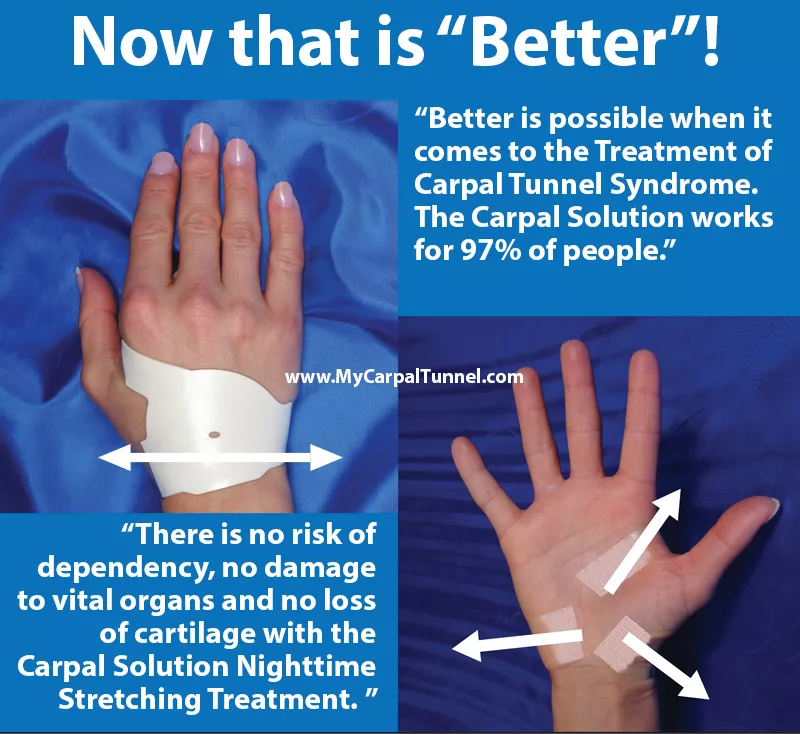
 Created by renowned Harvard health care professionals.
Created by renowned Harvard health care professionals. 

